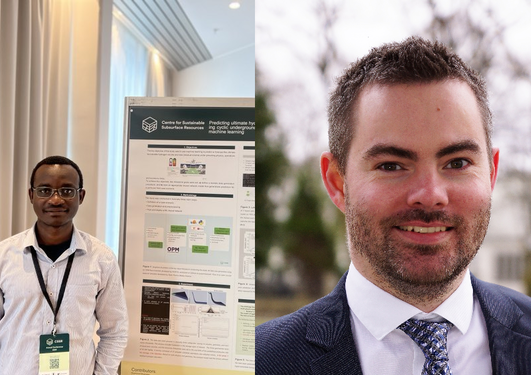HySchool Webinar #6: Leonardo Giannini (NTNU) & Petar Bosnic (USN)
The next HySchool Webinar will take place on Teams at 10:00 CET on 20 February 2024. Two admitted PhD students will each be holding a 15-minute presentation + Q&A session on their research topic.

Hovedinnhold
You will find powerpoints from the presentations under "Documents" after the webinar.
Leonardo Giannini
PhD student at NTNU
Natural Events and Hydrogen Subsea Pipelines: Implications on Planning Inspections Based on Risk
The idea behind planning inspections in accordance with assessed risk (RBI) derives from the intrinsic heterogenous distribution of the latter in industrial equipment. Central to this concept is the existence of critical components, that has two main implications. On one hand, items prone to hazardous failures should be meticulously evaluated by means of inspection protocols and preventive maintenance operations, with the purpose of minimizing the associated risk. On the other hand, risk-irrelevant equipment might be inspected with less effort, relying on the fact that such tools are either associated with an extremely low probability to fail or that the consequences of such failures have generally negligible repercussions on the broader industrial framework. This premise encapsulates the concept of RBI planning, which is often implemented for pressurized equipment. Within the context of subsea hydrogen steel pipelines, it is well-known that material integrity may be affected by hydrogen-assisted damages – thus potentially increasing failure probability – and RBI could be useful to assess material degradation and the following safety implications.
However, hazards posed by rare events do exist and they could be characterized by extremely severe consequences. Notably, these encompass underwater landslides and subsea earthquakes, rare phenomena that may induce a loss of containment in subsea transport systems, as already pointed out in previous studies. In this light, the assessment of whether Natech (natural-hazards-triggered technological accidents) events should be considered in the evaluation of risk in RBI planning and their potential in posing realistic and serious hazards to subsea hydrogen pipelines is intricate, and this work aims at investigating this aspect. In fact, consequences may be severe, so a valuable inspection strategy may include Natech-related scenarios to promote safety for hydrogen technologies. Hence, a preliminary approach for Natech-risk informed inspection planning and the expected outputs of the model are presented as an overall result.
Petar Bosnic
PhD-student at USN
Detonations in Risk Assessment of Hydrogen Systems
The rising importance of hydrogen in energy and its role in decarbonizing maritime and industrial sectors bring significant safety challenges due to its unfavourable physical properties, like molecular size and flammability limits. Accidental explosions pose substantial risks, with the potential for severe financial losses, injuries, or fatalities. Most incidental releases of flammable gases don't encounter ignition sources, but when ignition happens, it typically leads to deflagrations, generating moderate overpressure levels. Under certain conditions, a slow deflagration can accelerate into a faster one due to factors like turbulence-induced flame surface expansion, possibly triggering deflagration to detonation transition (DDT). This transition could lead to a propagating detonation, rapidly consuming the remaining combustible cloud, resulting in the most extreme catastrophic scenario.
The main objective of the research project is to understand the physics of gas explosions and numerical modeling of reactive, turbulent, and supersonic flows. The aim is to develop a computational fluid dynamics (CFD) solver for predicting DDT in gas mixtures containing hydrogen using under-resolved methods. This presentation will cover topics of hydrogen safety, gas explosions and CFD in OpenFOAM.
Microsoft Teams meeting
Join on your computer, mobile app or room device
Click here to join the meeting
Meeting ID: 391 457 099 491
Passcode: ZVyAXQ
Download Teams | Join on the web
Learn More | Meeting options


